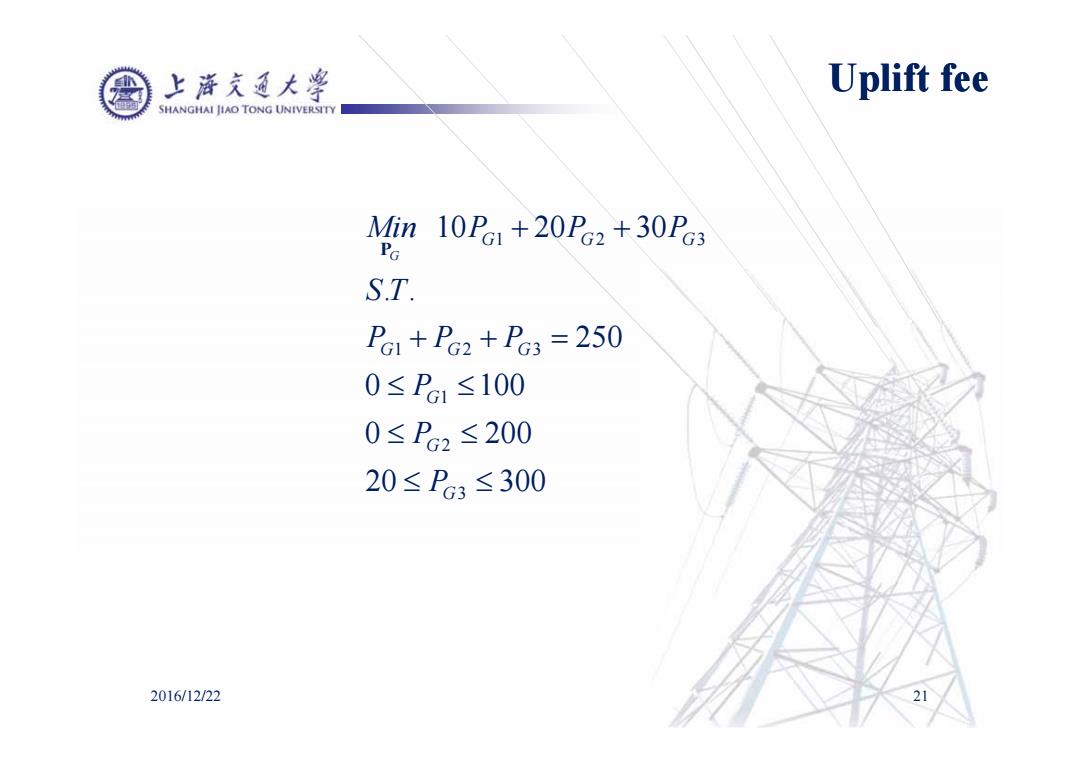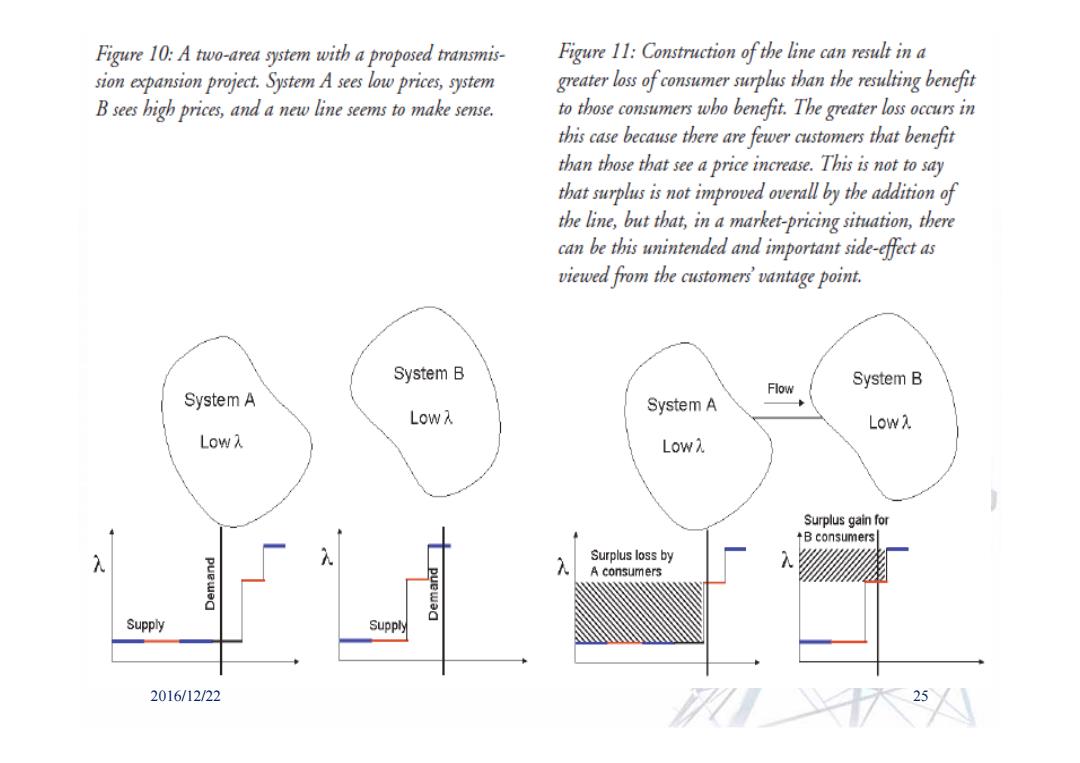
上游充通大学 Uplift fee SHANGHAI IIAO TONG UNIVERSITY Min10P1+20P2+30Pc3 S.T. P1+P2+P3=250 0≤P1≤100 0≤P2≤200 20≤P3≤300 2016/12/22
123 123 1 2 3 10 20 30 . . 250 0 100 0 200 20 300 G GG G GG G G G G Min P P P S T PPP P P P P 2016/12/22 21 Uplift fee

上游充通大¥ Problems of Uniform-Pricing model SHANGHAI IIAO TONG UNIVERSITY G1出力150MW G2出力50MW 报价$5MW 报价$30/MW G2 线路容量:100MW 50 MW 150MW 2016/12/22
2016/12/22 22 Problems of Uniform-Pricing model

上游充廷大¥ Problems of Uniform-Pricing model SHANGHAI IIAO TONG UNIVERSITY A pricing method (early in the New England electricity market)suggested that the system clearing price was 5/MW and the generator G2 received its bid price of 30 MW,thereby gaining a congestion uplift.The congestion uplift is allocated by loads demand.This is certainly unreasonable.And this is the biggest problem of the Uniform-Pricing model. Another pricing method suggest that the clearing price should be 30$/MW.According to this method,there is no congestion uplift in the market.However,the generator Gl would consider it unfair.Because the bid price of Gl is lower than the clearing price,which will result in“Output redundancy”. 2016/12/22
A pricing method (early in the New England electricity market) suggested that the system clearing price was $ 5 / MW and the generator G2 received its bid price of $ 30 / MW, thereby gaining a congestion uplift. The congestion uplift is allocated by loads demand. This is certainly unreasonable. And this is the biggest problem of the Uniform-Pricing model. Another pricing method suggest that the clearing price should be 30$/MW. According to this method, there is no congestion uplift in the market. However, the generator G1 would consider it unfair. Because the bid price of G1 is lower than the clearing price, which will result in “Output redundancy”. 2016/12/22 23 Problems of Uniform-Pricing model

Figure 7.Disconnected (or weakly coupled)two-area Figure 8.Construction(or expansion)of interconnection system.In standard operational terminology marginal makes it possible to operate the system at lower marginal operating costs are referred to as the systemThe bold costs,resulting in cheaper production costs(that translate and unbold segments are used to designate distinct sup- into end-user electricity rates)for system B without appre- pliers and to emphasize the lumpy nature of the supply ciably affecting the cost of system A. curves.Marginal cost of production and actual conditions can give rise to significantly different marginal operating costs (and consequently significantly different marginal costs of delivering power to customers)in the two systems. System B System A Flow System B High System A Low入 Low7 Low puewog Supply Supply Supply Supply
2016/12/22 24

Figure 10:A two-area system with a proposed transmis- Figure 11:Construction of the line can result in a sion expansion project.System A sees low prices,system greater loss of consumer surplus than the resulting benefit B sees high prices,and a new line seems to make sense. to those consumers who benefit.The greater loss occurs in this case because there are fewer customers that benefit than those that see a price increase.This is not to say that surplus is not improved overall by the addition of the line,but that,in a market-pricing situation,there can be this unintended and important side-effect as viewed from the customers vantage point. System B Flow System B System A Low System A Low 2. LoW入 Low2 Surplus gain for +B consumers 入 入 Surplus loss by 入 A consumers Supply Supply 2016/12/22
2016/12/22 25